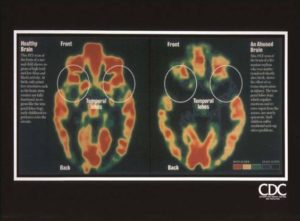 Feelings of depression, anxiety, sadness, and other emotions are generated in a part of the brain called the limbic system. This ‘downstairs’ portion of the brain is only interested in three things: Fighting, fleeing, or freezing. In ‘fight’ mode, the downstairs brain wants to protect you from harm by fighting against the threat. When it is triggered, your heart may race, your palms may get sweaty, and you may have a sharp increase in irritability and anger. In ‘flee’ mode, you may experience a similar adrenaline rush, but in this instance your brain is preparing your body to run away from the danger. In ‘freeze’ mode, we tend to retreat inside ourselves. This is the deer-in-the-headlights feeling of “If I’m very quiet and still, the bad thing won’t see me.”
Feelings of depression, anxiety, sadness, and other emotions are generated in a part of the brain called the limbic system. This ‘downstairs’ portion of the brain is only interested in three things: Fighting, fleeing, or freezing. In ‘fight’ mode, the downstairs brain wants to protect you from harm by fighting against the threat. When it is triggered, your heart may race, your palms may get sweaty, and you may have a sharp increase in irritability and anger. In ‘flee’ mode, you may experience a similar adrenaline rush, but in this instance your brain is preparing your body to run away from the danger. In ‘freeze’ mode, we tend to retreat inside ourselves. This is the deer-in-the-headlights feeling of “If I’m very quiet and still, the bad thing won’t see me.”
Whether you’re in fight, flee, or freeze mode, your downstairs brain is preparing you to deal with a real or perceived threat in the only way it knows how. When your downstairs brain is engaged, the upstairs part of your brain tends to get overwhelmed. The upstairs brain, which consists of the neocortex of the brain, is the part responsible for thinking things through, figuring things out, and solving problems. When the downstairs brain takes over, the upstairs brain is out to lunch. That’s why when you’re emotionally overwhelmed it is nearly impossible to figure out a way to deal with it. Upstairs brain is all about finding solutions to problems, but downstairs brain is all about fighting, fleeing, or freezing. When your upstairs brain is overwhelmed, thinking things over isn’t going to work. That’s because at that point your downstairs brain is in charge. For those times when your downstairs brain is running the show, mindfulness is a way of disengaging from the thinking cycle for a while so that you can re-center yourself and reconnect with yourself and the world around you.
